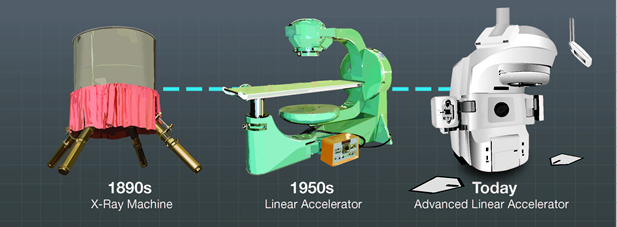
Radiation therapy has been around for over 100 years or nearly as long as the discovery and use of X-rays in 1895. At this time, doctors determined that its use could help treat growths and lesions including cancer. The field of radiation therapy became much more common in the early 1900s when Marie Curie discovered radioactive elements radium and polonium, which led to different types of therapeutic machines. The modern systems used to deliver radiation, called linear accelerators – came into use in the 1940s.
In the 1970s and 1980s, technological advancements like computed tomography (CT), magnetic resonance imaging (MRI) positron emission tomography (PET) have made radiation therapy even more effective today. Radiation oncologists can better see and target tumors and the technology is improving all the time, resulting in better treatment outcomes, more organ preservation and fewer side effects.1
Today, radiation therapy is common and considered an effective cancer treatment when applied using very strict patient safety precautions.